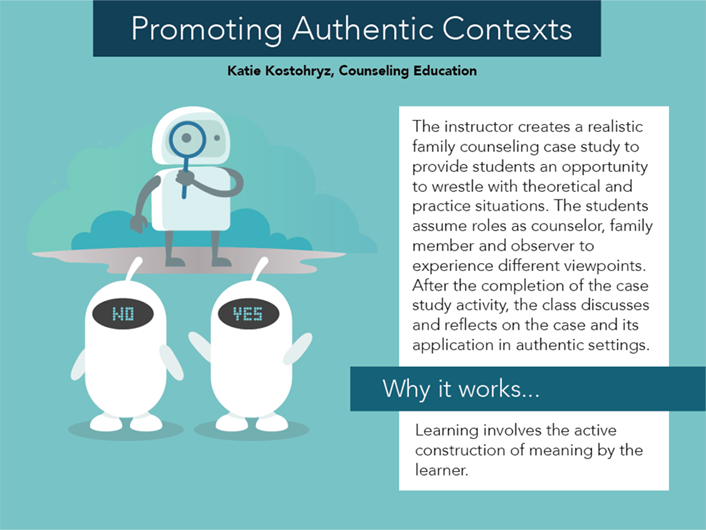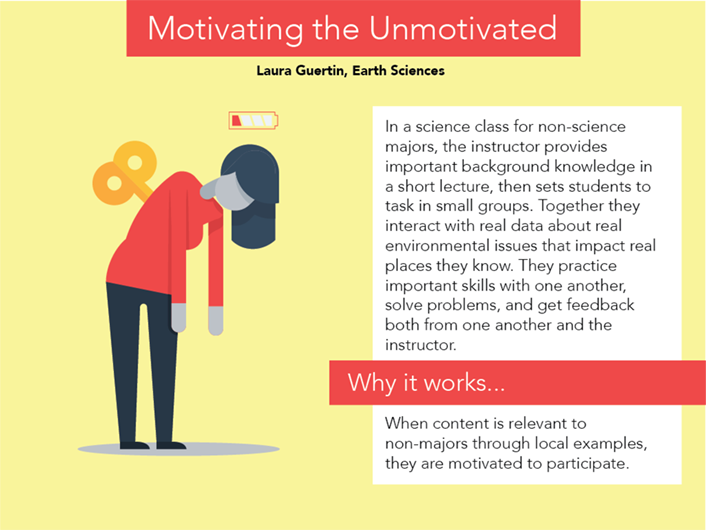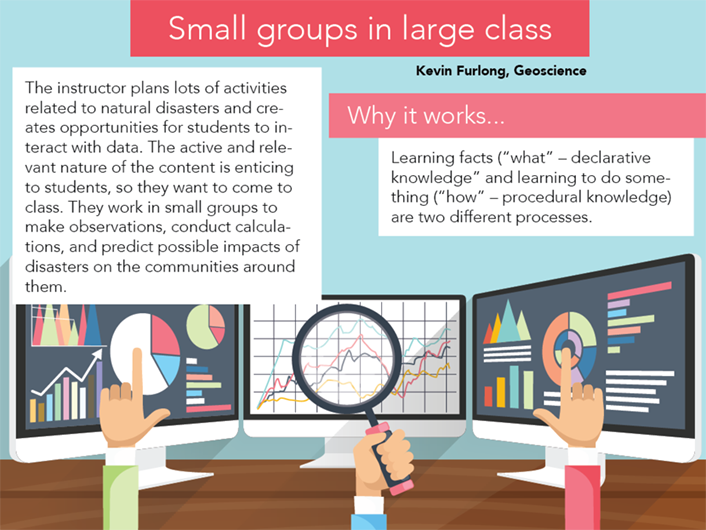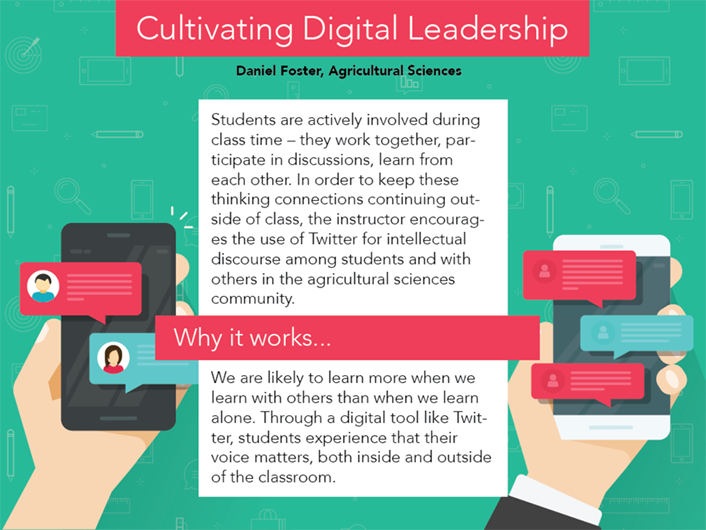
Getting faculty on board with active learning is key to improving student outcomes, and incorporating these learning strategies requires buy-in from both instructors and students.

Getting faculty on board with active learning is key to improving student outcomes; as such, incorporating these learning strategies requires buy-in from both instructors and students. Although active learning is any instructional method that engages students, it actually goes beyond engagement and requires students to perform meaningful learning activities and think about what they are doing.1 But for faculty, the time and preparation needed to create and deliver these activities can be obstacles.
Before we share some of our learnings, let us say that in helping faculty integrate students' active construction of meaning, we have discovered that sharing some of the research is a good way to engage faculty interest. There is literature indicating that active learning works and increases student achievement in STEM courses. Of course, nothing works across all contexts or populations, but the general consensus is that students do learn through active learning techniques. So how do we get faculty to start implementing these strategies in their classrooms? We have found the following three tips to be effective in assisting faculty with the implementation of active learning.
1. Start Small
A common question asked by faculty as they begin the task of incorporating active learning techniques and strategies into their teaching is, "How much time will this take?" This is an understandable concern, given the many demands on their time and energy. Some activities do require more preparation, but others are more easily implemented with minimal disruption to an instructor's existing teaching practices. Starting small with these activities and techniques is a solid approach to building a foundation on which to construct more complex strategies.
- Pause Procedure: This strategy involves building in two-minute breaks every 12–18 minutes during a lecture. The strategy has been shown to improve student performance, recall, and comprehension. Breaks can be used for peer discussion, individual reflection, or question-and-answer sessions.
- Wait Time: The simple act of waiting a few seconds for responses after asking a question can help students better process their thoughts and promote more engagement.
- The Minute Paper: Among the many classroom assessment techniques suggested by Angelo and Cross is the Minute Paper.2 Students take one minute to respond to a prompt, such as explaining the most important concept from the day's lecture.
2. Incorporate Local Voices
An old journalistic adage is "localize and update." We keep this in mind as we create resources to promote active learning strategies. By sharing examples featuring faculty on our campus, it validated not only that these approaches are in use but that they work with our student population. Using local examples also encourages faculty to reach out to each other and to experiment with new strategies based on technology already supported on our campuses. What better way to illustrate the possibilities than to highlight your faculty's efforts? These images represent five strategies in use by Penn State faculty:





3. Present Bite-Sized Information
Another challenge we often face as instructional designers is how to effectively share information and research about pedagogy and best practices with the faculty we support. One approach to tackling this problem is to develop materials that present information in small bites. Rather than suggesting an entire book or set of articles to an instructor interested in exploring a given topic, create a quick reference guide that covers the basics and offers tips and advice for applying the idea in the classroom. As part of our participation in the ID2ID Peer Mentoring Program, we put together this kind of document based on our reading of Make It Stick: The Science of Successful Learning. The book's eight chapters are broken down into a set of key ideas. Our quick reference guide defines each idea and offers a concrete example drawn from the book, followed by a sample syllabus that demonstrates what those ideas might look like in action. Through this one-page resource, faculty get a clear picture of some of the best evidence-based strategies for promoting recall and retention and how to put them into practice.
Engaging faculty to create meaningful active learning experiences in the classroom is a challenging task. These tips, along with connecting with fellow instructional designers in the field, can help you find new ways to engage faculty in this way. The more efficiently and effectively we can help faculty and instructors feel confident trying out new teaching strategies, the better the learning experience will be for students.
Notes
- Charles C. Bonwell and James A. Eison, "Active Learning Creating Excitement in the Classroom," September 1991, ERIC Clearinghouse on Higher Education, EDO-HE-91-1. ↩
- Thomas A. Angelo and K. Patricia Cross, Classroom Assessment Techniques: A Handbook for College Teachers (San Francisco: Jossey-Bass Publishers, 1993). ↩
Kathy L. Jackson is Faculty Programs Researcher and an Affiliate Faculty Member in higher education at Penn State University.
Dena Novak is Senior Instructional Designer at Rutgers University.
© 2018 Kathy Lou Jackson and Dena Novak. The text of this work is licensed under a Creative Commons BY-ND 4.0 International License.
